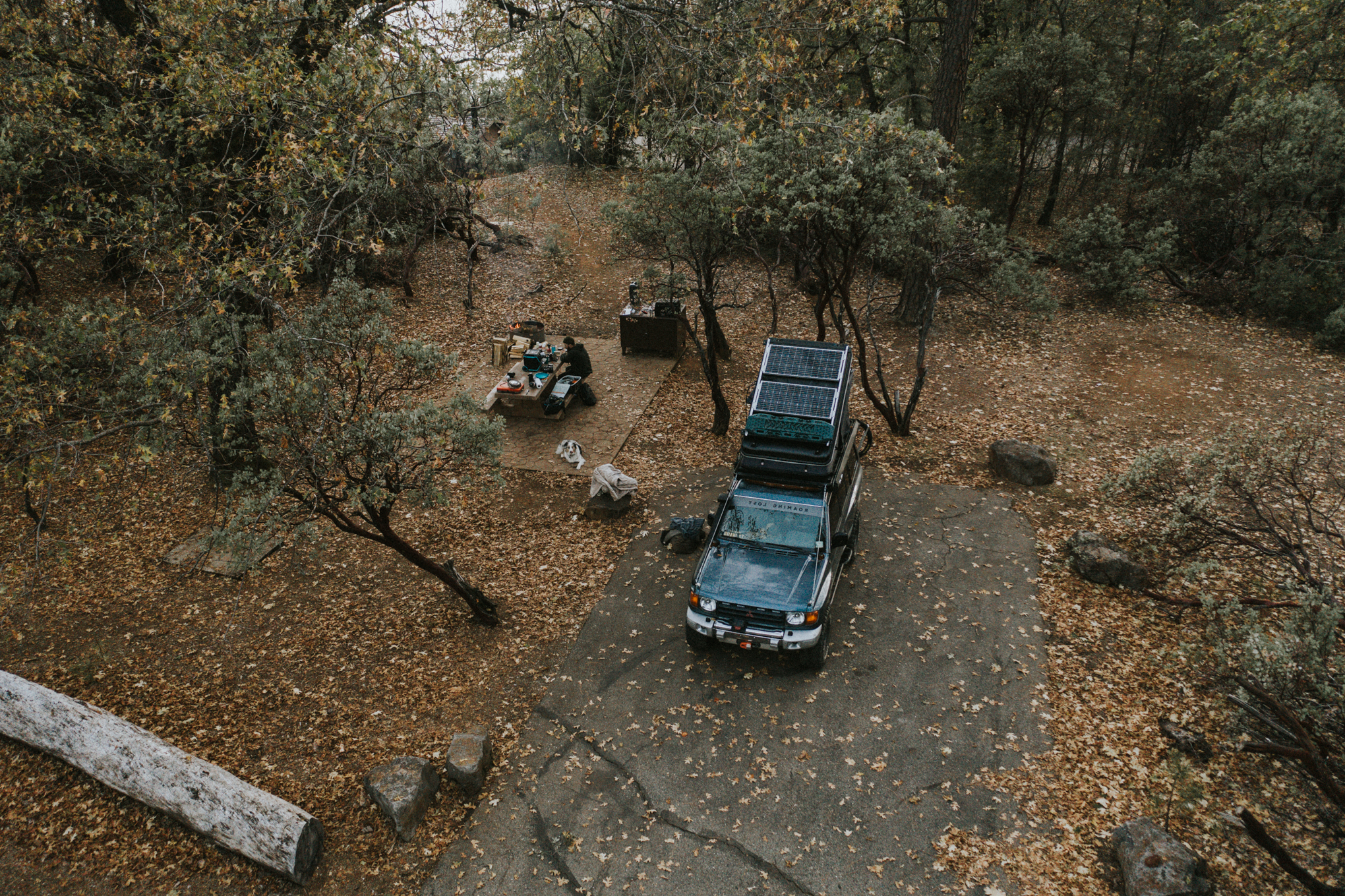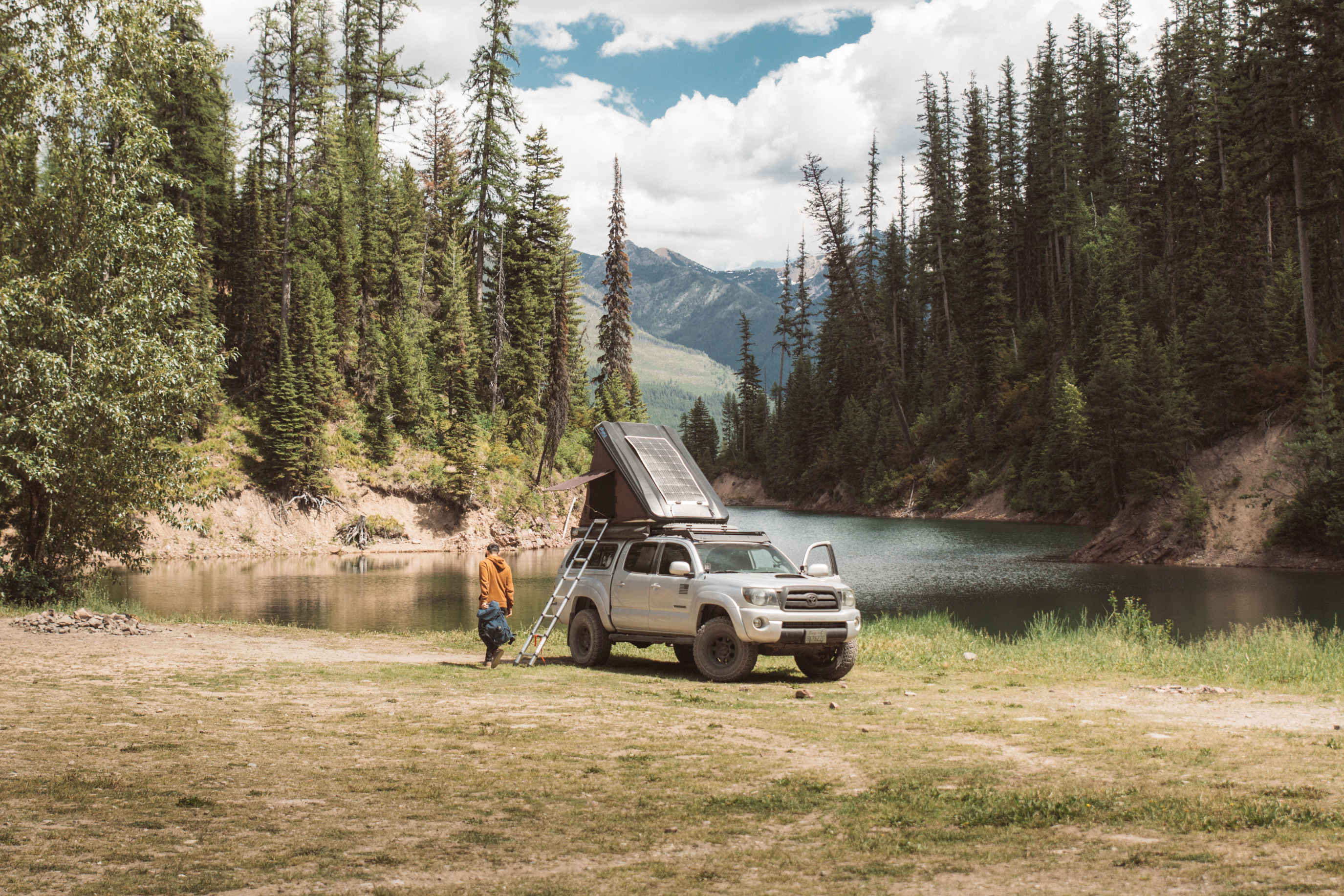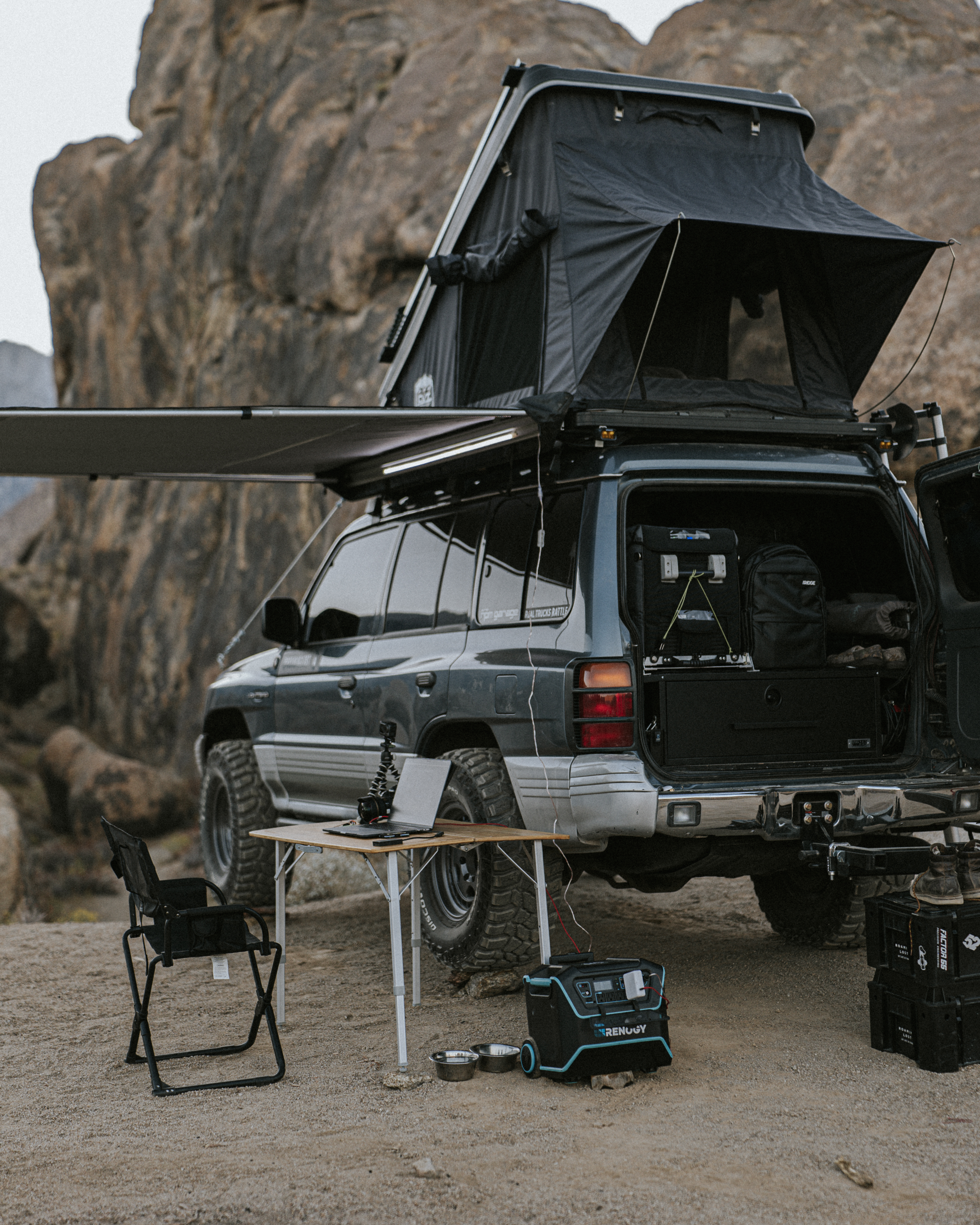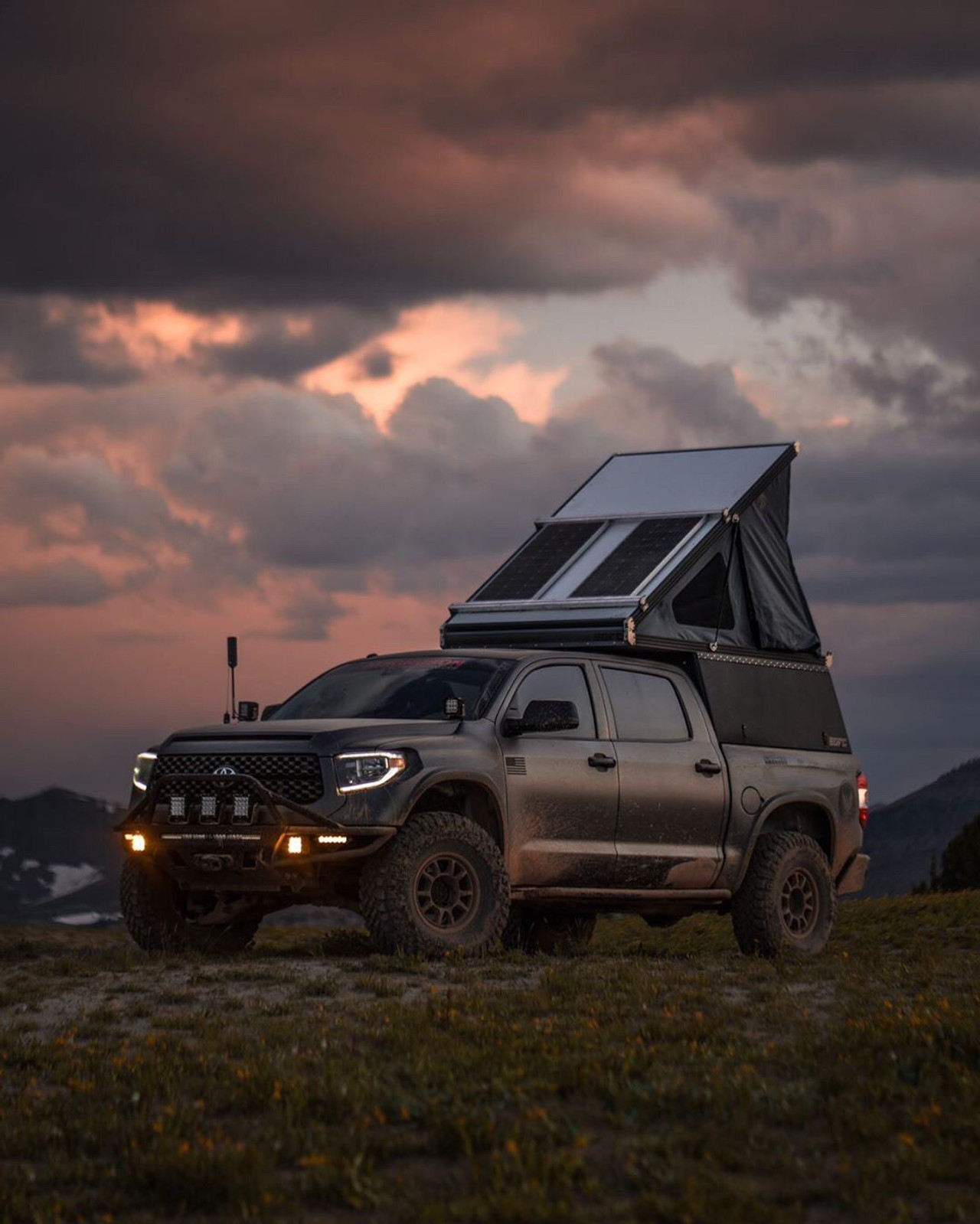Overlanding Basics!
Have you ever wanted to go car camping but wanted to stay away from crowded campsites? Or is renting or buying an RV out of the question? The following is an introduction to car camping with a twist!
Where do those lifted 4x4 vehicles with all that gear go?
You’ve seen them covered in mud on the highways and heard the grumbling of giant tires racing past you. With rooftop tents, cargo boxes, and even solar panels mounted — where are these vehicles going? They drive “over land” and are known as Overlanders!
Overlanding combines the spirit of off-roading and dispersed camping (camping anywhere outside a designated campground). Like a choose your adventure book, Overlanders determine their own campsite, bring their own survival necessities, and often camp in secluded areas. These two or four-wheeled vehicles often adventure over unpaved and undeveloped routes.

Isn’t that just car camping?
Well, yes and no. You may spot overlanders at full-facility campgrounds, but you usually won’t see RVs or sedans on undeveloped terrain. Overland vehicles usually require light to heavy modifications in order to reach the quiet serenity of the backcountry. And just like ancient trade caravans, you’ll often find them packing everything they need with them on their journey.
Where can you overland in the U.S.?
There are three main types of land that overlanders can roam on — National Parks, Forest Service Lands and Bureau of Land Management Lands. While some require permits or permission to be reserved ahead of time, some lands are open anytime for your enjoyment. Always check with the agency in charge of the lands you want to visit for specific details.
- U.S. National Parks (NPS)
- U.S. Bureau of Land Management Land (BLM)
- U.S. Forest Service Lands (USFS)
'

What do you need to overland?
Generally, you want an off-road capable vehicle with an AWD or 4x4 drivetrain to help get you out of sticky spots. Front or rear-wheel drive cars can have issues with traction. In a rocky or muddy situation, there will not be enough power to the wheels to get you out of trouble.
You’ll also need some sort of shelter for sleeping - whether that’s in the vehicle, a rooftop tent, or freestanding tent outside the vehicle. Your level of comfort and tolerance of the elements will usually dictate your shelter type.
Finally, you’ll want to bring enough supplies like food, water, electronics, safety gear, and whatever else you want for your adventure!
Can you go overlanding with solar?
Yes, you can! With all the options overlanders have for customization, the choices for overlanding with solar are readily available. Here’s a list of general overlanding types and options to incorporate solar energy.
The Overlanding Weekender
Vehicle: Stock AWD or 4x4 vehicles
Terrain Capability: Mainly flat dirt or gravel roads
Shelter: Sleeping inside your vehicle or freestanding tent
Solar Power Options: Renogy E.Flex Solar Panels, Renogy Powerbanks, Renogy Phoenix Solar Generator
The Overlanding Enthusiast
Vehicle: Lightly modified AWD or 4x4 vehicles with lift and light-duty all-terrain tires, tow hooks, and lighting
Terrain Capability: Dirt, rock, sand, or snow
Shelter: Sleeping inside your vehicle or rooftop tent
Solar Power Options: Renogy Foldable Solar Suitcases, Renogy Lycan Solar Power Generator
The Overlanding Die-Hard
Vehicle: Heavily modified AWD or 4x4 vehicles with full suspension and heavy-duty all-terrain tires. Winches, lighting systems, recovery traction tracks are also common
Terrain Capability: Extreme conditions, rock, sand, deep mud, deep snow
Shelter: Rooftop tent or tent on a trailer
Solar Power Options: Renogy Solar Kits, Renogy Batteries, Renogy Power Inverters, Renogy Battery Chargers
Overlanding provides a new way to experience the outdoors. A vehicle not only provides comfort but helps you reach places away from busy campsites. And for those who want to stay off-grid longer, overlanding with solar is a perfect option!

Here are some final overlanding tips:
Tip #1 Practice Leave No Trace Principles
Practicing Leave No Trace helps ensure outdoor enjoyment for future generations. Learn more about the 7 Principles.
Tip #2 Consider renting an adventure-ready vehicle
If you don’t have an off-road capable vehicle or don’t want to risk the one you own, renting is a great option. There are numerous companies and configurations to choose from.
Tip #3 Plan & prepare accordingly
Always make sure you have enough food, water, fuel, and proper gear. Plan on not having any cell phone coverage, so bring tools like a map and compass for navigation. And notify emergency contacts of where you’re headed and when you expect to be back within contactable range.
Tip #4 Travel in a group and with experienced overlanders
Safety and fun, in numbers. Learn how to navigate through tricky spots with experienced drivers. Gain some valuable experience in spotting good campsites and camping off-grid.
Tip #5 Don’t forget to have fun!
Enjoy the sights and sounds of nature away from crowded campsites. Grab a few cold ones and enjoy camp with your friends and family!










